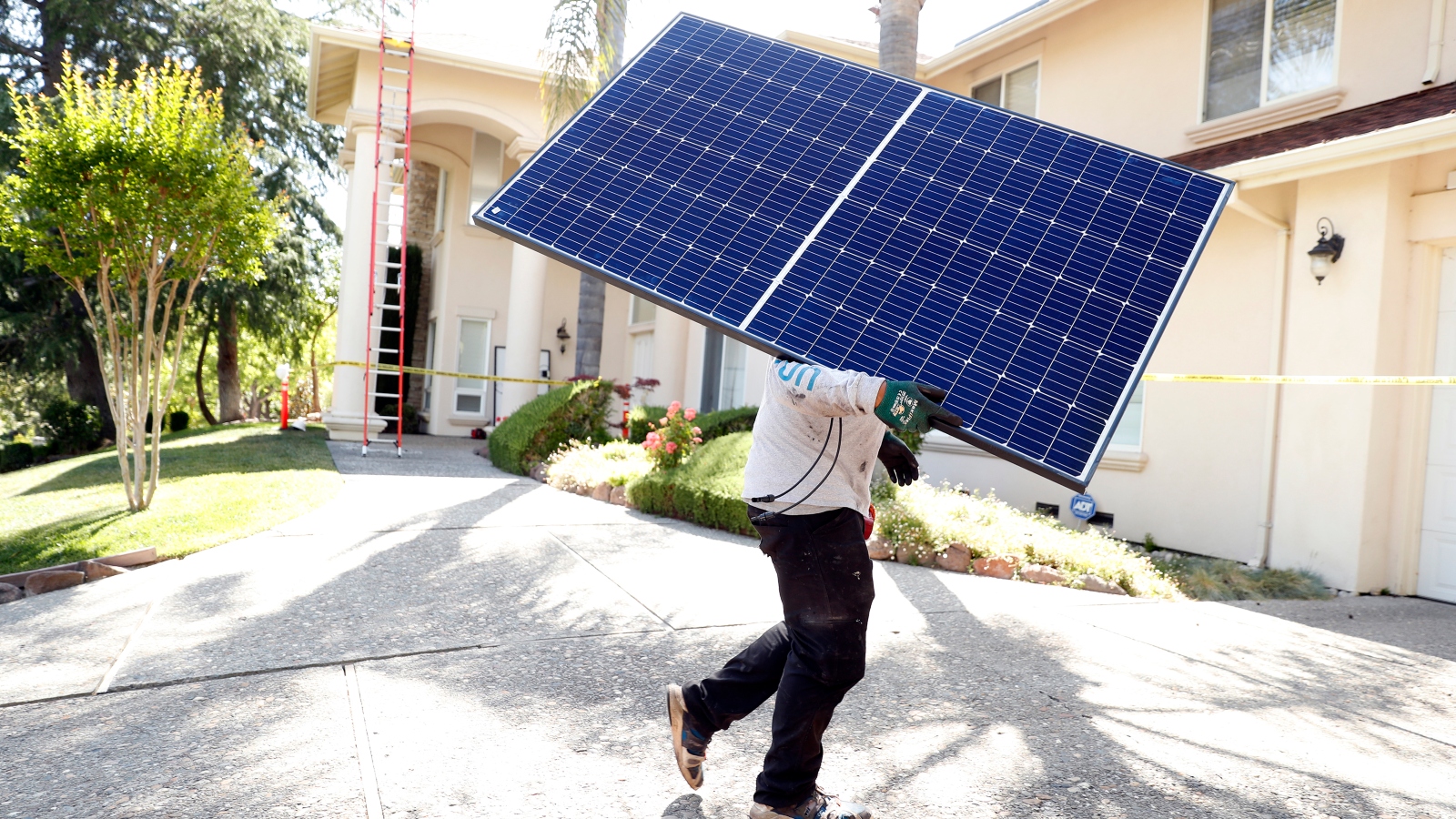This story was supported by the Economic Hardship Reporting Project.
As wildfire smoke from Canada plagued parts of the United States for the second time this summer, expanding into parts of the Midwest and East Coast, cities were caught unprepared. While a few put out alerts, outreach was limited.
People walked through the smoke, often with little understanding of the health risks. Once the risks were clear, some people donned masks to prevent lung damage. But when the smoke — and the clear presence of danger — receded, they left the masks behind.
That’s easy enough for people who have a place to call home. But for people who are homeless, either living in a shelter or on the sidewalk, they often have to navigate confusing rules and regulations to receive the type of help they need.
Additionally, for unhoused people, dangerous air isn’t just a threat during an air quality crisis — it’s an everyday occurrence. People who are unsheltered are the most at risk, living under highway overpasses or closer to industrial areas, which means their exposure to air pollution is 24/7 and not just for a few days.
In Chicago, unhoused people living in a green space adjacent to a highway overpass were taken aback by the smoke from Canadian wildfires. One resident is worried about how the once-novel event might be the latest in a terrifying “new normal.”
“It was normal on the West Coast and now they have Canadian wildfires up here, now the Midwest is going to be, like, normalized with wildfire [smoke],” said Jared Wilson, 23.
Wilson lives with asthma and has used an inhaler since he was a child. He describes Chicago’s air as being consistently polluted, even before the wildfire smoke rolled in. A recent Guardian analysis placed the city third overall for worst air quality in the U.S. mostly due to truck and car traffic on the city’s South and West sides.
For Joe Muro, 44, a recent transplant also living close to the highway overpass, wildfires are nothing new. He did not expect the smoke to follow from Colorado, where he lived through the destructive Marshall Fire in the winter of 2021.
According to Muro, volunteers came by to offer masks and water to folks living in tents in the area. But he does not recall the good samaritans as being affiliated with a city agency or partner.
Everything about the air quality crisis was exacerbated by climate change, from the fires themselves to the weather pattern that blew the smoke directly down the East Coast, according to Kristie Ebi, a professor of global health at the University of Washington.
Though the smoke has cleared again, the U.S. could see another repeat of it, as long as the fires continue to burn — and unhoused people will be the ones most affected, according to advocates.
“With any natural disaster, we emphasize that people experiencing homelessness experience it first, they experience it worst, and they generally experience it longest,” said Katie League, a behavioral health manager at the National Healthcare for the Homeless Council. “Particularly those who are living outside all the time, they don’t have dependable resources.”
Highway overpasses or places adjacent to industrial areas can be safe havens for people experiencing homelessness, since they might provide freedom from displacement or harassment from police or other residents.
But those places expose vulnerable people to dangerous air pollutants, and they have few provisions to help them address health issues that might arise. A 2022 study from the Cleveland Clinic found that in Visalia, California, more than 60 percent of unhoused people surveyed often spent time adjacent to roadways –– where their exposure to particulate matter and other air pollutants was constant. Researchers noted that existing equipment probably could not capture the full extent of the pollution people are exposed to when they reside next to a roadway.
One of the main pollutants found in both wildfire smoke and car pollution is called fine particulate matter. PM 2.5, another name for fine particulate matter, is smaller in size than most other types of air pollution, which means that it can bypass your body’s defense system. It can burrow deep into your lungs and even get into your bloodstream, causing all sorts of short- and long-term health issues like asthma, COPD, and heart disease along the way.
“There is emerging evidence that the particulate matter that comes from wildfires could be more toxic than the particulate matter that comes from, for example, exhaust [pipes],” said Ebi.
Air pollutants from wildfire smoke can be more dangerous than regular contaminants because wildfires can burn beyond forests into residential and commercial areas. When those wildfires burn, they can clear almost anything in their path, including plastics, synthetic fibers, steel components, and other materials. Those substances eventually end up in the smoke along with wood particles from forests, creating a particularly toxic combination.
As the climate crisis intensifies, unhoused people could be exposed to even more dangerous conditions with long-term effects. In a 2020 study from the University of Utah, researchers found that nearly 90 percent of people in Salt Lake County experiencing homelessness sought out medical attention for a condition associated with air pollution.
If homeless people do have access to shelter, they are often dependent on a wide array of systems that may or may not be responsive to their needs. Shelters might only be open certain hours, or have certain requirements. Additionally, families might need to separate to be allowed into certain shelters — putting parents in a difficult situation.
Other cities expanded hours for shelters and handed out masks to try to help people through the crisis. In Philadelphia, the city opened a shelter in an area where none had existed before. In Baltimore, the city expanded the time that people could be in shelters, as well as coordinated outreach to unhoused people through a program from the mayor’s office.
“It is a coordinated response. And so we identify who was at greatest risk, either based on their living situation, because they were unsafely housed, as well as individuals who the city employs that have to work outdoors,” said Dr. Leticia Dzirasa, deputy mayor for equity, health, and human services in Baltimore.
But part of the issue is a lack of resources to initiate a response when events like these happen, according to Dzirasa.
While air quality in the United States has markedly improved since the 1980s, not everyone gets the benefit. Communities of color are often disproportionately exposed to poor air quality because of decades of racist zoning policies that disadvantaged non-white and immigrant neighborhoods, often forcing them to live closer to industry.
In a similar vein, homeless people often find safety from the elements in the high traffic, centrally-located areas under highway overpasses, which also provide a steady stream of air pollutants. These two issues are often affecting the same group of people, since Black and Latino people are more likely to experience homelessness than their white counterparts.
Planning is key, said Ebi, who noted that any early warning system needs to include everyone, including the unhoused.
Longer-term hazards, like vehicular or industrial pollution, also pose an ongoing threat to people’s health. Although there are numerous solutions to limit exposures, including opening up cooling centers, expanding shelter access, and paying hotels to rent out space for people.
There’s only one that is truly effective for Sean Read, vice president of regional programs at Friendship Place, a Washington, D.C., nonprofit focused on providing services for homeless people.
“The answer is: We need more housing,” said Read.
This story has been updated to include Sean Read’s correct job title.
This story was originally published by Grist with the headline How air pollution and the housing crisis are connected on Jul 7, 2023.




